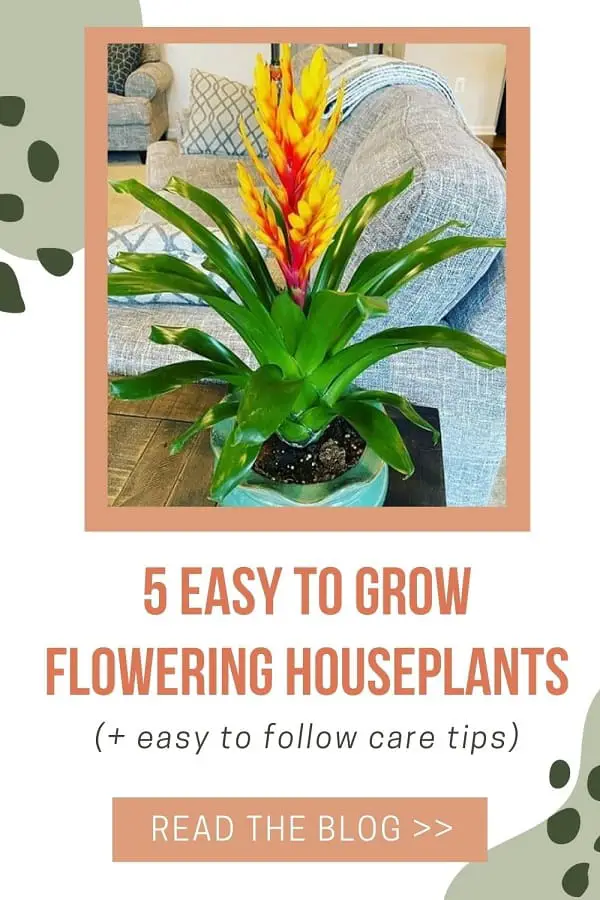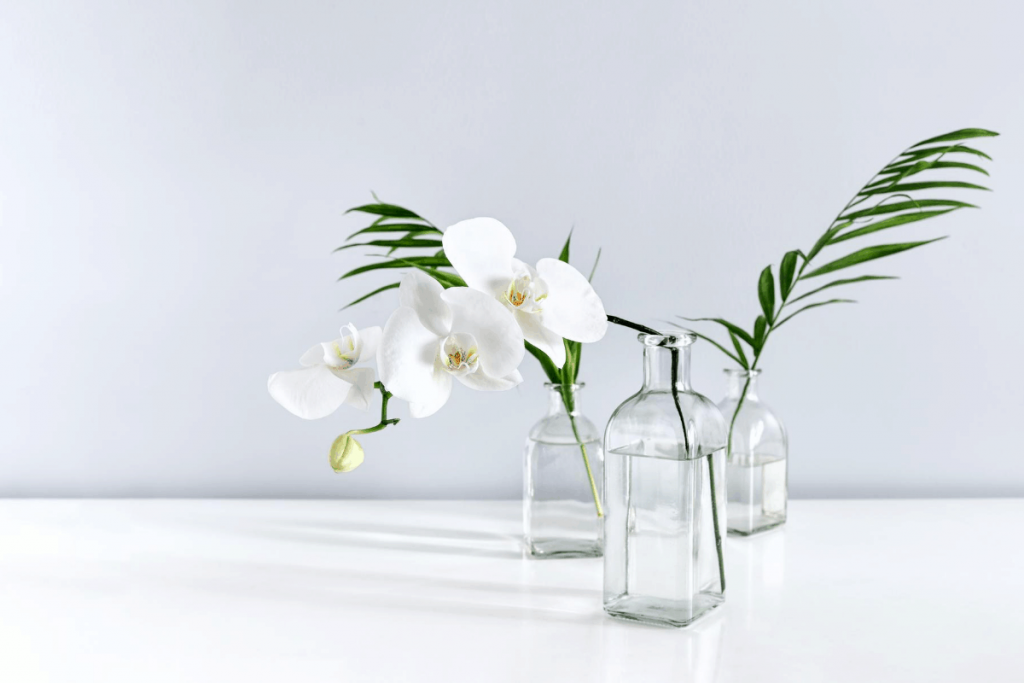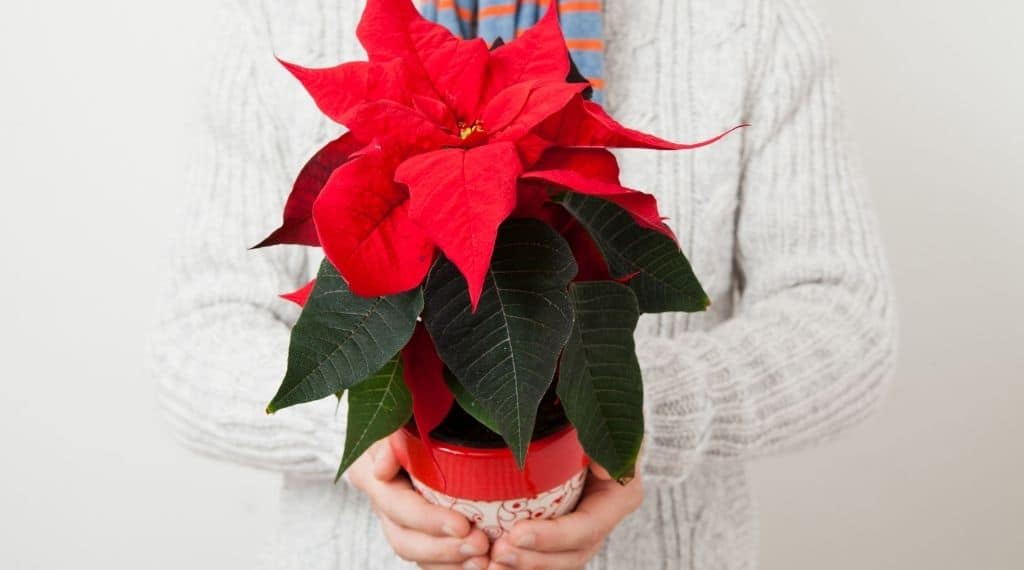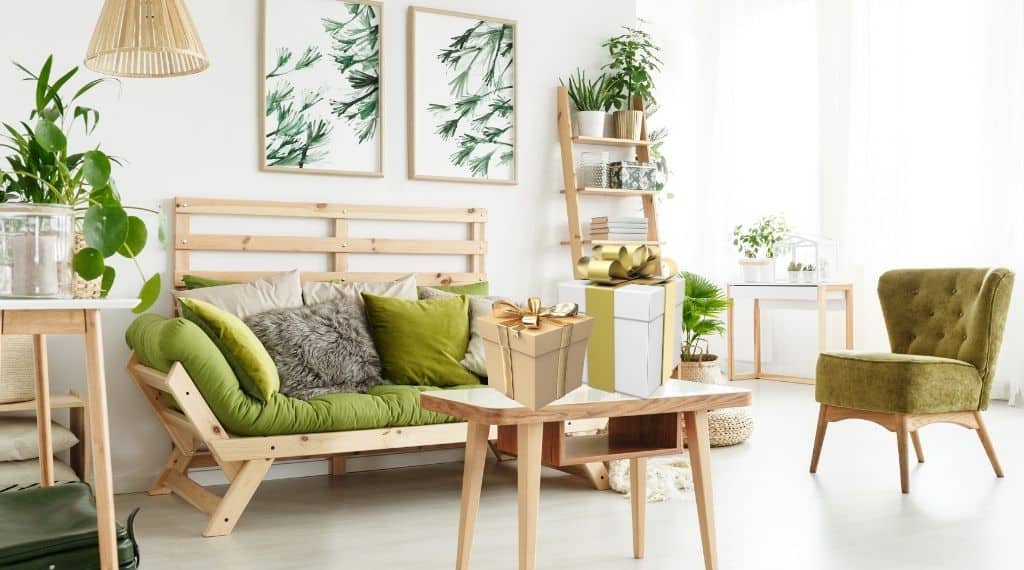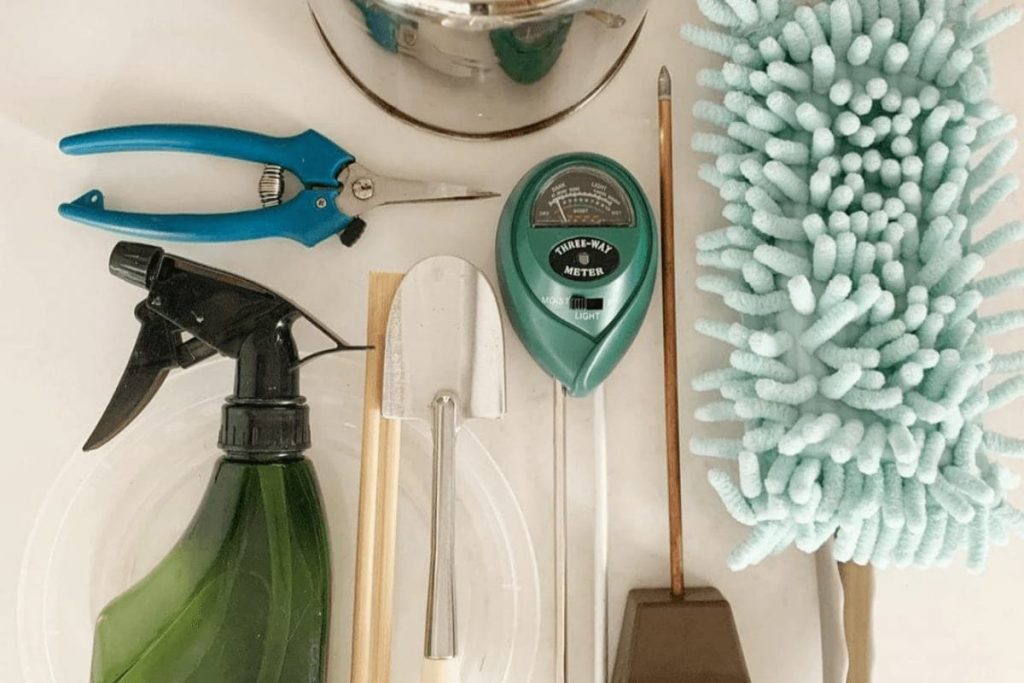Last Updated on October 5, 2021 by Plantiful Interiors
For a simple, low cost way to add life and color to any room, check out these easy flowering houseplants.
Flowering plants are an excellent way to add just the right amount of color and texture to your interior. Not only are flowering plants beautiful to look at, they also help remove toxins from the air and keep your home fresh. As an added bonus, they also last much longer than regular cut flowers, giving you more bang for your buck.
Plants that flower are already stunning but their beauty can be enhanced by the pot you plant it in. Choose a pot that is funky and stands out, or pick a subtle one that blends in with your existing decor, the choices are endless.
We’ve rounded up our top 5 easy flowering houseplants that are great for beginners or those who struggle to keep plants alive.
This site features affiliate content. As an affiliate partner of various brands, we earn commissions on qualifying purchases, at no extra cost to you. Please read our disclaimer for more information.
Moth Orchid (Phalaenopsis)
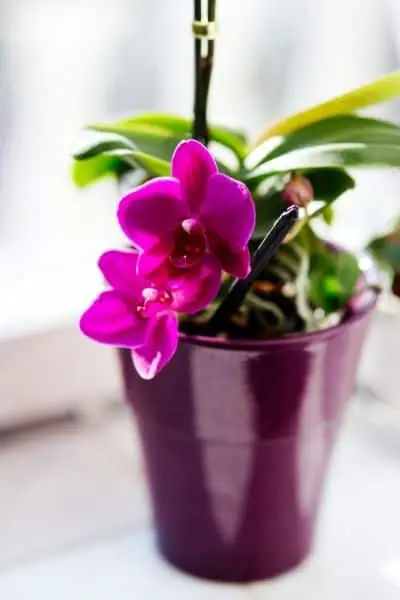
There are many varieties of indoor orchids, but the moth orchid is undoubtedly the one most recommended and most common to find at your local garden centre.
Environment:
This stunning flowering plant does well in rooms with a steady temperature between 18-20 °C. Make sure this orchid is placed in a room that doesn’t dip below 15° C when the sun goes down. These plants should be kept in a naturally bright area but not in direct sunlight. Confused? This means, keep it in a room that gets a good amount of natural sunlight but don’t place it directly in the windowsill where the light will hit straight on.
Water:
Water your moth orchid every 7-10 days keeping the soil damp at all times. It can be tricky to know how much water is at the root of the plant. Since you don’t want your roots to get soggy, use one of these moisture meters to keep an eye on the water content in your soil. Make sure to plant your moth orchid in a pot with drain holes and empty the drain tray after watering so the plant is not sitting in water.
Flower:
The Phalaenopsis orchid will produce stunning white, pink, lavender or yellow flowers from spring to summer but does have the ability to flower year round if you’re lucky.
Peace Lily (Spathiphyllum)

It is the native plant of tropical America that combines the beauty of dark, varnished foliage, with the grace of very durable white flowers that renew themselves in any season if the light is sufficient. This “moonflower” is satisfied with a minimal care and cleanses the homes air.
Environment:
Peace lilies enjoy bright light in winter and partial shade in summer. These conditions will encourage your plant to bloom almost year round. If the plant is placed in an area that has too much shade, it won’t flower as much as it could, but will still look beautiful with its full green foliage.
Water:
Peace lilies will tolerate underwatering more than overwatering. Allow the soil to dry out between each watering. This will mean that you can’t necessarily water these plants on a regular schedule. Instead, you’ll need to check the soil weekly to determine if it’s dry. A great way to do this (instead of using your finger) is to use a moisture meter. You can find out more about moisture meters here. If the foliage begins to sag, it has gone too long without adequate water.
Flower:
Most people think that the flowering part of the peace lily is the white single petal surrounding the cream colored stalk. However, that white “petal†is actually a modified leaf and is called a spathe. The actual flowers are a small cluster that form on the stalk, these are called inflorescence. The white spathe encloses and protects the inflorescence until it is ready bloom, opening and revealing the flowers. Deadhead any faded flowers to assist with new growth.
Bromeliad

This low maintenance easy flowering houseplant is absolutely stunning. Adding a Bromeliad to your home decor will give a relaxing tropical feel to any room. These colorful vibrant plants are grown in three different ways: in air, on rocks or in soil. The conditions listed below are for those grown in air or in soil. For more plants that can grow in air (without soil), check out this article: 3 Houseplants You Can Easily Grow In Water.
Environment:
Place your bromeliad in an area where it will get bright indirect sunlight. Although these plants adapt well to indoor conditions, you can place it outside in the summer time. Direct sunlight will burn the leaves. Do not crowd this plant, it needs good air circulation so make sure nothing is crowded against it. This easy to grow indoor flowering plant is a favorite among beginners looking for bright color and a full plant.
Water:
Similar to the Anthurium above, this easy flowering houseplant loves humidity. For optimal growth, consider placing your pot (with drain holes) on top of this humidity tray. Potted Bromeliads should be watered weekly, allowing for the soil to dry out in between. Bromeliads grown as air plants can be watered by misting the leaves frequently and placing in a water bath weekly. The nutrients are soacked up through this plants’s leaves, not its roots.
Flower:
Bromeliads only flower once, typically in the winter, and look absolutely stunning when they do. Don’t let the limited flowering deter you as these plants are excellent for propagating which will allow you to grow new plants from the original.
Watch this video for tips on how to propagate your Bromeliads.
Anthurium (Flamingo Flower)
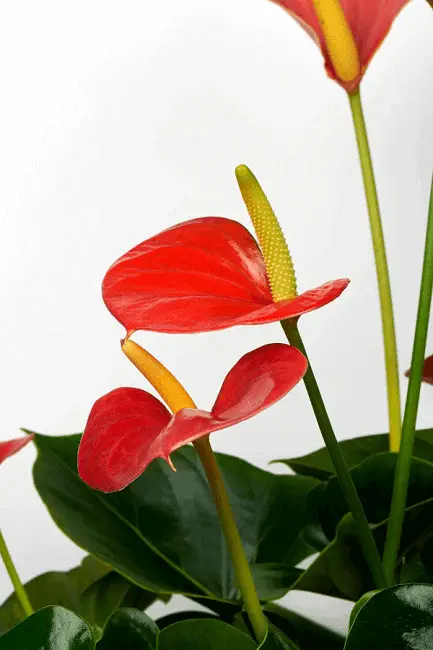
The Anthurium lights up home interiors with its shiny and colorful leaves. One of the qualities that make this one of the easiest flowering plants to grow indoors is the fact that they are not actually flowers. Similar to the peace lily, what looks like a stunning heart shaped “flower†is actually a spathe.
Environment:
Anthuriums prefer humid atmospheres and temperatures ranging from 18 to 25 ° C. They enjoy lots of indirect sunlight and are best placed in a living room as their leaves absorb pollutants present, helping to clean the air in your home.
Water:
Anthuriums love to be watered but be careful not to overwater. Once the water starts to pour out of the drainage holes of your pot it has likely had enough, you don’t want to have water sitting in the soil and rot the roots. You may need to water every few days as these plants tend to dry out quickly – puckering leaves is one way your plant is telling you it needs more water.
To increase the humidity around this plant, place your pot on gravel in a saucer filled with water.
Flower:
As mentioned earlier, these are not actual flowers, so they don’t carry a strong aroma. You can find Anthurium’s in white, pink, red, or purplish colors.
CAUTION: Beware of its sap, which can be irritating to the skin. These plants are also poisonous if ingested so if you have small children or pets they may not be the best choice.
African Violet
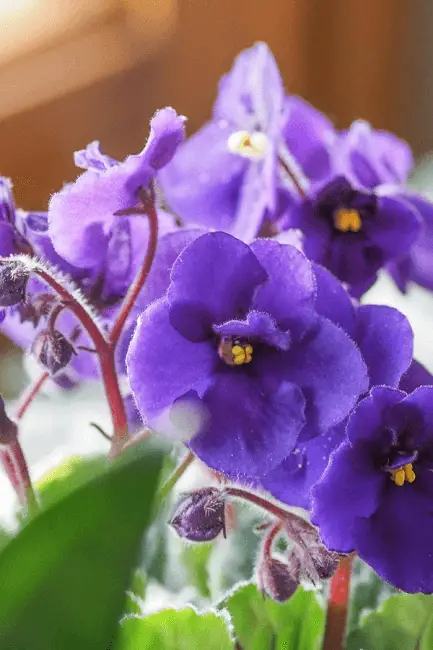
Environment:
Like most of the other easy flowering houseplants on this list, the African Violet prefers bright indirect light. Opt for an area close to or on the windowsill of an East facing window. If you do place this velvety beauty in the windowsill, check to make sure there is no draft in the winter. African Violets will die if temperatures reach 10° C and below.
Water:
Plant your African Violet in a well-draining soil inside a pot with drain holes so water will not have a chance of pool and cause root rot. The soil should dry out between each watering. To test the moisture content in the soil, reach your index finger halfway into the soil and feel if the soil is damp or dry. For a less messy, more accurate solution, use a moisture meter. The leaves of your African Violet can be discolored if water is splashed on them so be careful with your aim.
Flower:
African Violets come in a range of purple hues so you’re sure to find one that suits your decor. We love the way these brighten up an end table or act as a centerpiece on a dining room table. If your plant isn’t flowering, it may not be getting enough light, try moving it closer to a window.
This cat-friendly houseplant is safe for your four legged bestie so no need to worry if Felix decides to turn it into a playtoy or takes a nibble.
Where To Buy Easy Flowering Houseplants
Now that you know which flowering houseplants are easy to grow, plan a visit to your local nursery or, browse through some of our favorite online retailers:
Amazon   |   Succulents Box   |   Bloomscape | Etsy
